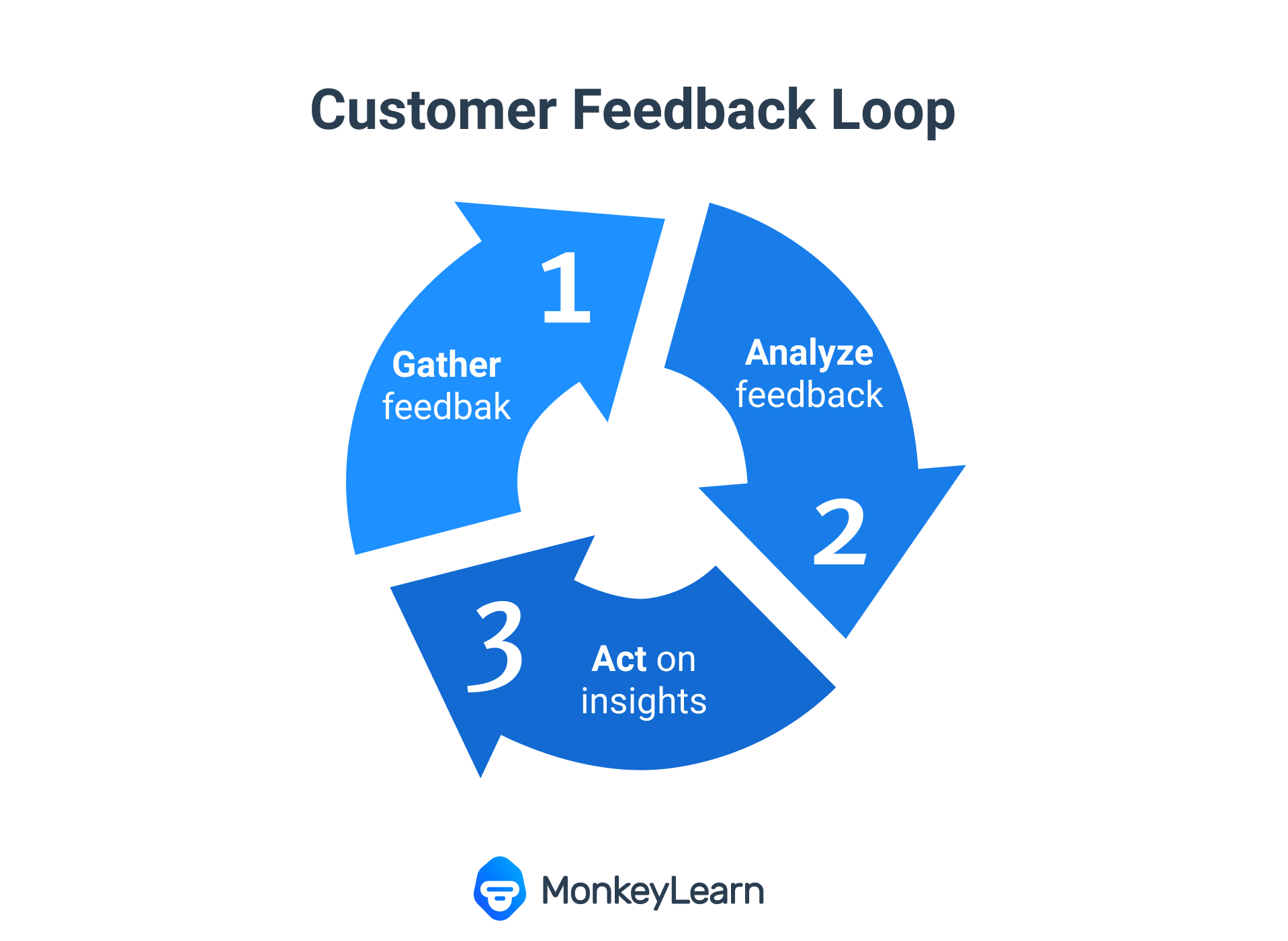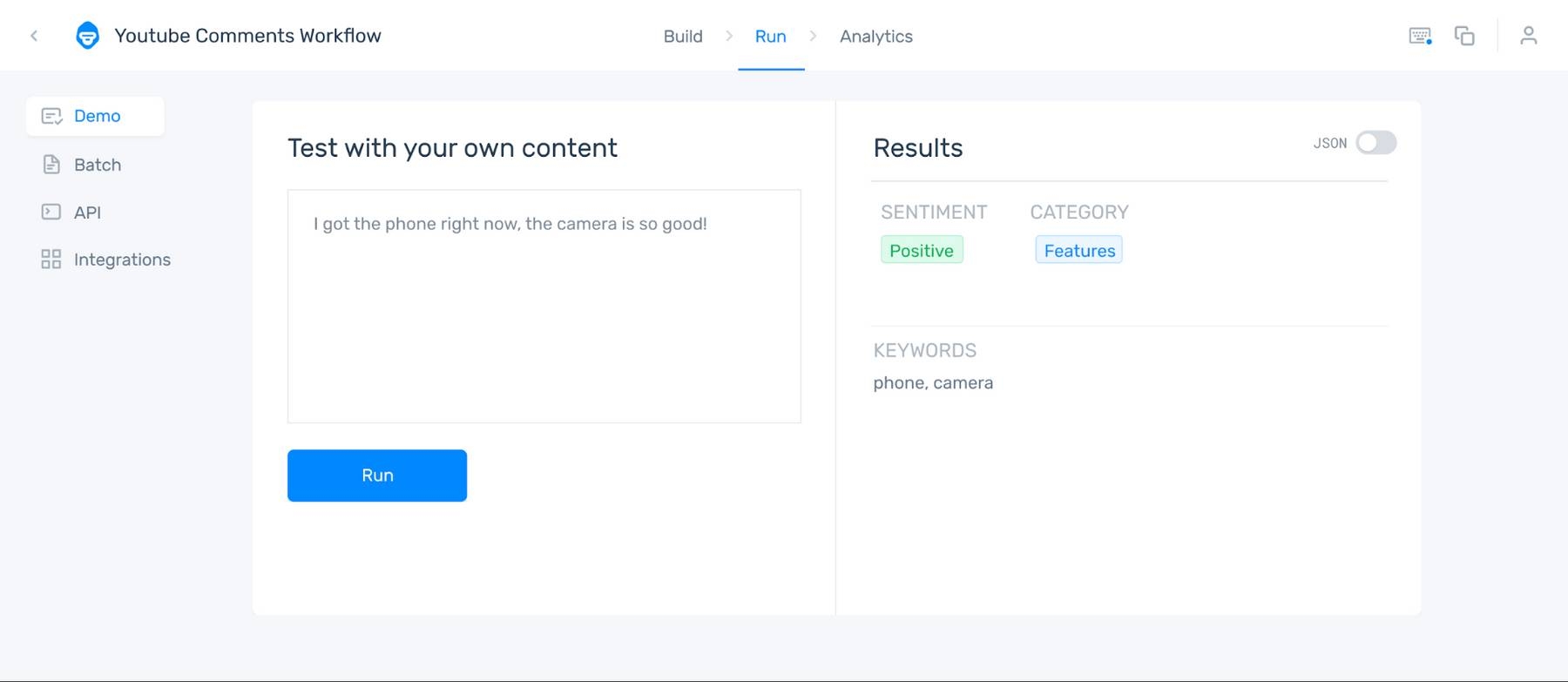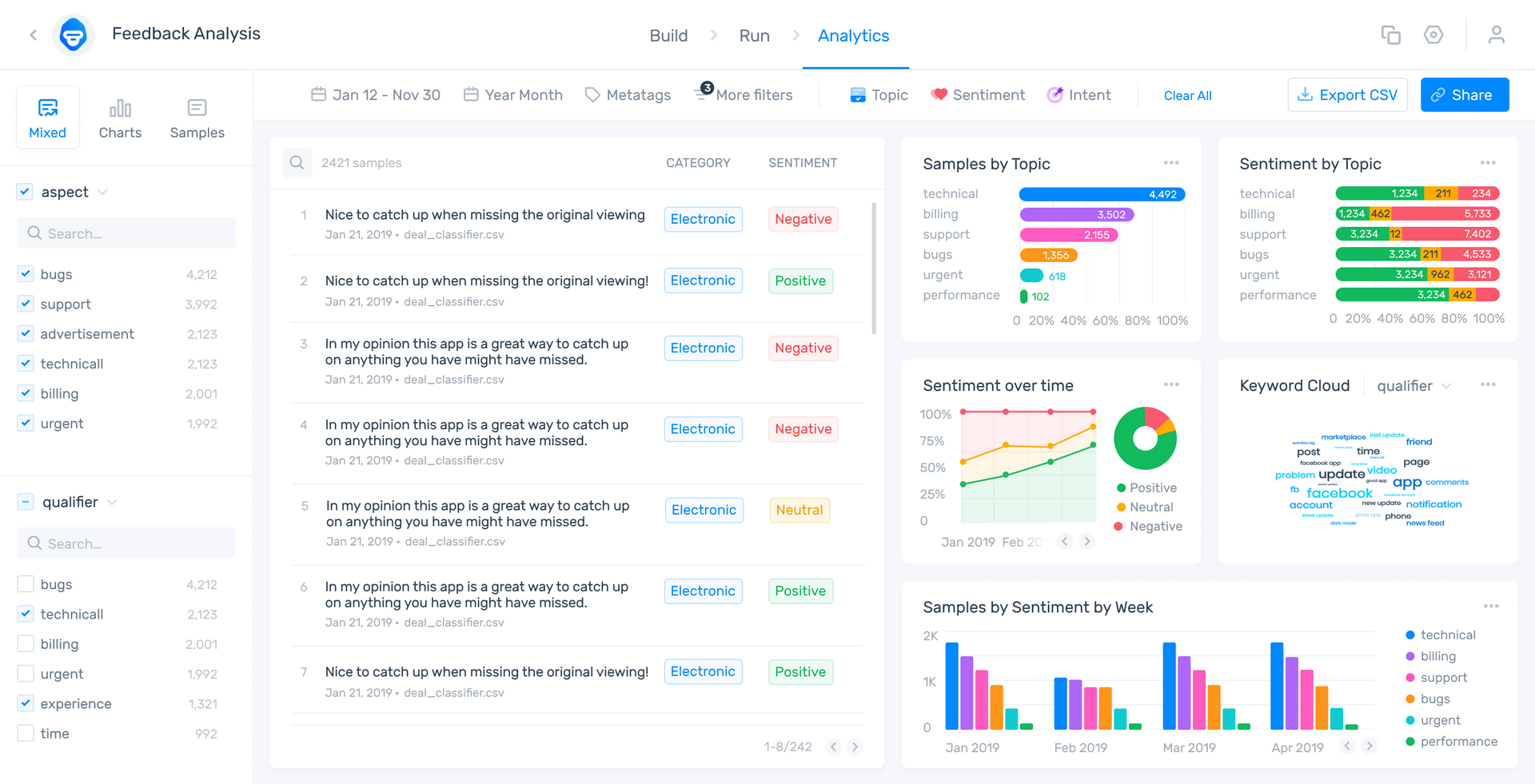Closed-Loop Feedback Process to Enhance Your Brand

Staying on top of customer feedback from customer service tickets, customer satisfaction (CSAT) surveys, emails, chatbots – not to mention social media comments and online reviews – can seem like a daunting task.
But gathering and analyzing all those comments, complaints, and suggestions is key to understanding the voice of the customer (VoC) and following the entire customer journey to improve the overall customer experience (CX).
Fortunately, with advancements in AI tools, you no longer have to hand-annotate and manually analyze all that customer data, so getting a handle on customer feedback is much faster.
And, when you put a multichannel, feedback loop in place, you can ensure you understand the customer journey from start to finish, never miss a piece of customer feedback, and, finally, close the loop to let your customers know that you’re always listening.
- What Is Closed-Loop Feedback?
- Benefits of Closed-Loop Feedback
- How to Build a Closed-Loop System
- Your Closed-Loop Feedback Solution
What Is Closed-Loop Feedback?
Closed-loop feedback is customer feedback (from surveys, emails, etc.) that is responded to directly by the company to “close the loop.” The feedback loop is closed when a company has instituted changes based on customer feedback and/or responded to the customer’s inquiry.
Putting closed-loop systems into place will ensure that your business handles customer feedback in a timely fashion and doesn’t let customers “fall through the cracks.”
Text analysis platforms, like MonkeyLearn, can automate every step of the feedback loop process to save time and money, enhance analysis accuracy, promote internal communication between teams, and improve your business’s products and/or services.
Closed-loop feedback stimulates and supports communication between a business and its customers and, ultimately, benefits both sides.
Benefits of Closed-Loop Feedback:
There are many reasons to use closed-loop feedback and the benefits can be huge for any business. You’ll understand the customer journey and uncover pain points along the way, as well as:
- Improve customer satisfaction
- Make real-time decisions
- Reduce customer churn
- Create learning opportunities for employees
- Increase revenue
Improve customer satisfaction
A recent Zendesk survey tells us that 50% of global customers say that they would leave a company for the competition after just one bad experience, and 80% would leave after more than one letdown. Furthermore, possibly due to the COVID-19 pandemic, half of customers say that customer service is more important to them now than it was even just a year ago.
Performing a customer feedback loop and implementing a closed-loop feedback process will dig into every aspect of the customer journey to discover major pain points that you can improve upon to increase customer satisfaction. Regular CSAT surveys and social listening techniques can gauge your company’s overall success and conduct market research to understand how your customer satisfaction compares to the competition.
Make real-time decisions
Text analysis tools, like sentiment analysis, can automatically analyze thousands of surveys in minutes or constantly monitor your brand sentiment online to follow the opinion polarity of your customers: Positive, Neutral, Negative. Running analysis 24/7 and in real time means you can turn on a dime to react to changing sentiment, or handle a problem before it spirals out of control.
Reduce customer churn
Use closed-loop feedback to understand why customers are leaving your company, to reduce churn and improve retention, which is especially useful when it costs five times more to acquire new customers than to retain the ones you already have. Performing surveys and following customer journey pain points will pinpoint why customers may be unhappy. And when you close the loop, to let customers know that you’ve rectified past mistakes, you may even be able to save the relationship.
Create learning opportunities for employees
Closed-loop feedback ensures that employees learn from their (and the company’s) mistakes with the act of reaching out to close the loop. A simple apology can go a long way to let customers know you’re listening and when employees are held accountable, they’re less likely to make the same mistake again.
Furthermore, allowing employees to make their own decisions and handle customer support without running it up the chain of command, gives employees more agency and leads to higher job satisfaction and loyalty.
Increase revenue
The math is simple: higher customer satisfaction, real-time insights, increased customer retention, and decreased employee churn, lead to decreased spending and increased company revenue.
How to Build a Closed-Loop Feedback System
- Gather customer feedback with surveys, internal systems, or on the web
- Analyze customer feedback with AI tools for immediate results
- Close the loop – put your results to work and close the loop

Gather Customer feedback
Survey tools, like SurveyMonkey and Typeform make creating, customizing, and sending CSAT and NPS surveys easy. Perform them regularly in emails or texts or have them pop up on your website or in your app.
Internal data from emails, chat applications, and CRM systems often has a lot to offer, and you’re probably already saving all this data on internal servers or in the cloud.
You can even find customer feedback from all over the web: social media comments, online reviews, news reports, and more, offer opinions about your brand and products that may be even more useful than surveys.
Analyze Customer feedback
SaaS text analysis tools, like MonkeyLearn, allow you to automatically analyze open-ended survey responses and online comments for powerful, real-time insights.
This unstructured text data used to have to be analyzed and annotated by hand – taking hundreds of hours and producing less than consistent results. But with machine learning platforms, like MonkeyLearn, analyzing complex data is accessible to everyone.
MonkeyLearn’s suite of text analysis tools allows you to set up your closed-loop feedback system and have it run automatically.
Use sentiment analysis to automatically analyze surveys, reviews, or social media comments to go beyond numbers and statistics, to understand the feelings and opinions of your customers.
Test your customer feedback in MonkeyLearn’s pre-trained sentiment analyzer, below:
Add techniques, like topic analysis to perform aspect-based sentiment analysis for even more in-depth results. The end result is feedback that allows you to understand which aspects of your business are particularly positive and which are negative.

Best of all, with MonkeyLearn, you can custom-train these tools to the language, needs, and criteria of your business – usually in just a few steps.
Close The Loop
Now it’s time to close the loop. Use your analysis results to improve your products and services and enhance the customer experience.
Maybe a customer has found a new use case for your product. You can publicize this to the rest of your base and publicly thank the customer that pointed it out – that’s a closed-loop feedback process.
Similarly, for example, if your CSAT surveys find that customer onboarding is a consistent pain point, maybe you need to review the overall process, retrain staff, or simplify instructions. Then close the loop by informing customers that you’ve instituted changes.
Even if customers point out something they dislike that you simply cannot change – keyboard commands, the name of a product, whatever it may be – it’s still important to respond with closed-loop feedback. Let them know you’re listening, thank them for pointing it out, and apologize for not being able to make the change. Sometimes just knowing someone is listening can do a lot to help a customer’s perception of CX.
Your Closed-Loop Feedback Solution
Closed-loop customer feedback is clearly useful, presenting immediate, real-time results and powerful insights to keep your customers happy, decrease customer churn, and increase revenue.
Closed-loop feedback tools with machine learning technology, like MonkeyLearn, offer the techniques and computing power you need to get the most out of your customer feedback data.
MonkeyLearn also provides data visualization tools that take your closed-loop feedback analysis one step further, with striking visualizations and easy-to-understand results displayed together.
Take a look at this aspect-based sentiment analysis of customer feedback from Zoom, for example:

Each review is classified by category: Usability, Support, Functionality, etc., and then analyzed by sentiment: Positive, Negative, or Neutral.
Imagine putting MonkeyLearn to work on your closed-loop feedback data from internal sources and all over the web.
Sign up for a free demo to find out just how easy it can be to set up your own closed-loop feedback system.

Tobias Geisler Mesevage
February 8th, 2021






